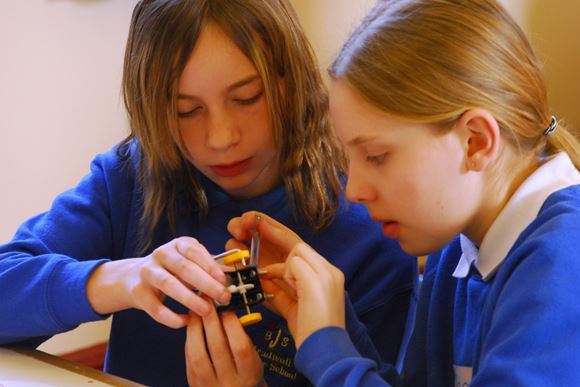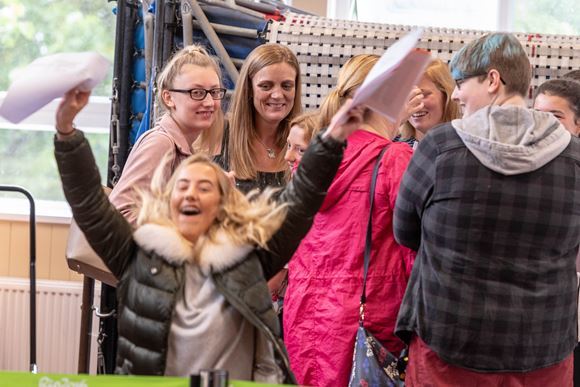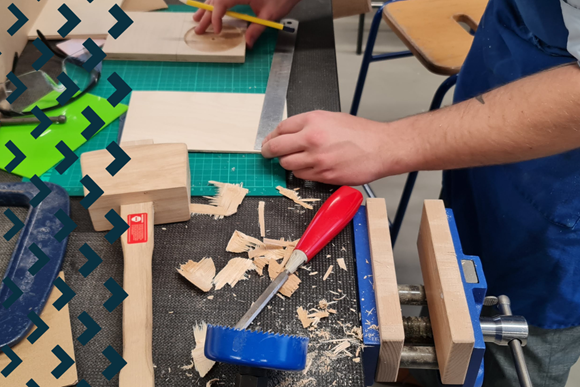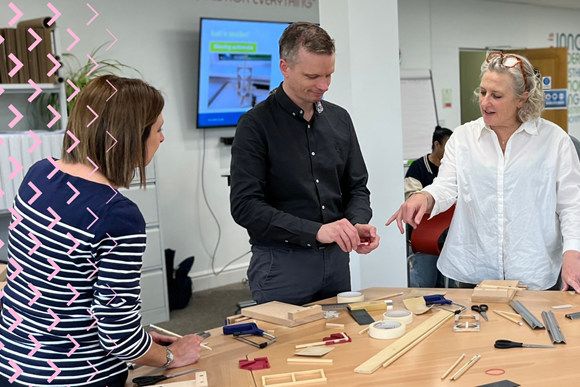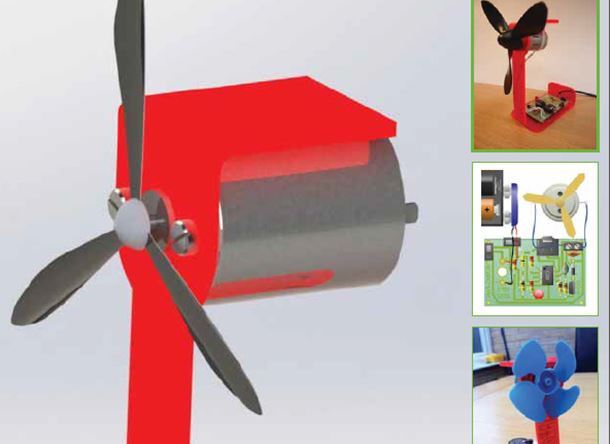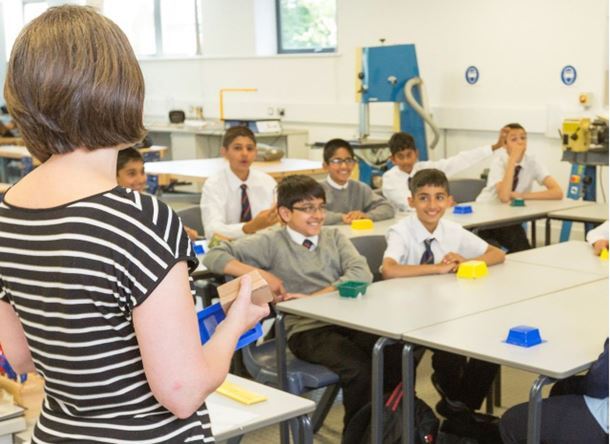Timetabling D&T
Published 6th May 2020
Written by: Andy Mitchell
Andy Mitchell explores the importance of good timetabling for design and technology
Importance and context
Recent posts in social media have included requests made by Subject Leaders, asking for examples of timetabling models used in colleagues’ schools. It takes me back to when I engaged in the annual process of timetabling D&T in a large comprehensive school at which I worked. Obviously no two schools are the same and there are many variables to consider, such as number/type of specialist rooms, available specialist teachers, time allocation and distribution, class grouping/division etc. What works in one school, won’t work in another but perhaps we can identify some broad principles to establish and implement whatever the situation.
Getting the timetable right is one of the most important jobs a subject leader has to do. What is created, will either be enabling or conversely, considerably restrict curriculum delivery. Consequently, I am always amazed when I read of colleagues who talk about the timetable being imposed upon them by the member of the Senior Leadership Team (SLT) with responsibility. It should be the subject leader who first of all makes the case for exactly what is needed. For sure timetabling will only be successful if the subject leader takes the initiative and insists on working with the overall school timetabler from the earliest opportunity. Establishing a good professional working relationship between them is essential. Inevitably it will require challenges to be worked through, negotiation with colleagues, creativity and a good degree of compromise to be made. Few timetablers will be familiar with the idiosyncrasies of every subject and D&T in particular has more than most. For this reason alone, timetabling for the year ahead has to be given high priority in the annual work of a middle manager.
So how do we approach the task?
The problem of timetabling D&T is not a new one. Indeed, I could argue, that beyond the continuation of the legacy GCSEs (now replaced by the single title GCSE), the biggest obstacle preventing D&T moving forward in many schools has been unimaginative timetabling. Since the subject’s introduction, in too many schools, the ubiquitous ‘carousel’ cyclic model prevails. This requirers pupils to jump from one D&T specialist ‘area’ to another and worse still, change teacher every few weeks! This has perpetuated the view of some, that D&T is simply a basket of craft-based activities, rather than the discrete subject it in fact is. That’s not just me suggesting that now. The failure and undesirability of the model has long been pointed out by HMI, Ofsted, the D&T Association and others for decades! But it still persists.
I recall the D&T KS3 timetable model we developed at the large Derbyshire school where I worked for six years, as Faculty Lead and head of D&T. It was designed specifically to meet the requirements of the National Curriculum D&T and develop a holistic approach to designing and making. Fundamentally, it was developed to enable the learning of D&T and take advantage of the opportunities that the National Curriculum D&T programmes of study provided. Reviewing it now, I conclude that it would still provide an excellent base to underpin the requirement of the current public examinations commonly taught in D&T departments – both GCSE and vocational.
I offer the below example, purely for comparison purposes and, of course, appreciate that not just local variation but also changes of priority in schools in intervening years has perhaps impacted less favourably on the interests of the D&T timetable. A redefinition and prioritisation of the core, EBacc and performance measures, an increasingly crowded curriculum and even the lack of availability of suitably qualified staff, have all impacted the subject. The biggest difference for many schools now will be that of time allocation. But much of what follows may at least be of some use when initially addressing priorities and in this respect, I hope is still valid.
Underlying principles
We began by establishing several underlying principles:
- There is one subject D&T. The various specialisms are merely subservient to it. But to support the approach of addressing authentic design and technology activity such as ‘contextual challenges’, a wide range of skill, knowledge and understanding should be developed in several ‘material areas’.
- Get KS3 (the majority of the teaching) in place first.
- Material areas to be defined as: Food; Product Design (including technical graphics, constructional materials such as wood, metal, plastics and electronics/systems and controls); and Textiles.
- A blocked timetable would be used: Each year group had 9 forms of 30 pupils. Forms were identified by a letter DISCOVERY - so 7D, 7V, 8D, 9O... etc. For D&T purposes, each year group was taught in half year groups. So, on any one occasion, we had 5 classes (DISCO) or 4 classes (VERY) timetabled to be taught at the same time. So, 5 X 30 = 150 or 4 X 30 = 120
- Classes were to be divided into teaching groups of 20. So, in DISCO, there were 150 / 20 = 7 groups of 20 (approx.) and in VERY, 120 / 20 = 6 groups of 20.
- Internally, once this was blocked on the school timetable plan and the requisite number of specialist D&T teachers/rooms identified, it was the Subject Leader’s responsibility to allocate, teachers, rooms and curriculum activity. This took into account, experience, career development, workload and where possible to accommodate, individual preferences.
- Wherever possible ‘specialist’ teachers teach their specialism/s. In rare instances where staffing did not permit this, an available D&T teacher would be trained/supported in delivering specific modules.
- All D&T lessons to be taught in 1hr 10mins sessions (2 X 1 single 35min period). So, each D&T group are taught D&T twice each week i.e. 1hr 10mins X 2 per week, totalling 2hrs 20mins.
- Each group are taught by the same two teachers all year, for each of the two respective lessons a week. So, for example, Product Design with one teacher Monday, Food on Wednesday with the second. At Spring half term, Food is replaced by Textiles (or vice versa) - and sometimes a change of teacher to reflect specialism.
- Depending on the number of KS4 and post 16 groups, timetable these along with the other subjects accompanying them in option blocks.
What are the benefits of block timetabling for D&T?
These include:
- Continuity: no carousel so no ‘jumping’ every few weeks to another teacher/room etc. Therefore more chance for progression in learning and less chance that learning steps will simply be repeated.
- Teachers really get to know their individual pupils they taught. This is ABSOLUTELY CRUCIAL. So many times, I have witnessed, teachers teaching the ‘project’ as opposed to the individual learners, simply because within the 6-8 weeks they see them in a year, they can’t possibly become familiar with their individual characteristics, interests and learning needs. It becomes all about completing the task in the time.
- As each group is taught by only 2 (or possibly 3) teachers, professional discussion, comparing assessment and reporting progress at key points is vastly simplified and made more reliable.
- Blocking the timetable presents the teaching team with many opportunities. For example: Bringing several groups or indeed all of the half year together for a one-off lesson in the hall, for instance to hear a visiting speaker, watch a video, challenge setting briefing etc.
- If there are adjacent rooms, when desirable, it is possible for pupils to work across material areas and go to the room next door to use a piece of equipment that only exists there.
- Planning for the efficient use of technician support time and physical resources such as a laser cutter can take place.
I should mention that art and design was also taught by different teachers, alongside D&T but timetabled separately. On occasions, curriculum links were made between the two areas.
Now I appreciate that the favourable time allocation detailed above will be in stark contrast to that which many schools are allocated today. But I would also say that I had to really fight for the above. It was only achieved by first making a convincing case to SLT and having the school timetabler on board.
Whilst the single point of reference for D&T i.e. the national curriculum programs of study still make reference specifically to teaching food technology as well as cooking and nutrition, part of the time I believe food teaching and learning should still contribute to the shared delivery of design and technology. Timetabled in the above way, provides food teaching to concentrate on the changes of emphasis toward cooking and nutrition but also facilitates the important role it should play in developing design and technological capability.
Footnote
For sure timetabling is an inexact science and never straightforward. Even during the process of its creation, factors are likely to arise that suddenly make what was at first ‘on the board’ and established, not secure or even impossible. A change in staffing for example. But what is most important, is that the Subject Leader establishes themselves as the ‘go to person’ when things need to change. Solutions should be developed collaboratively not just imposed from on high. Any good senior leader will appreciate this and will also appreciate the benefit of working closely with the subject leader, who brings with them particular knowledge and experience.
There is also another added benefit of involvement in the process, particularly for those teachers who have in their sights career progression and the opportunity to take on wider school responsibility. The insight the exercise of timetabling brings to the whole business of school planning and resource management is invaluable and provides excellent personal development. It may in fact be that the latter provides the way into the process. Expressing an interest in the school timetable and offering to be of assistance presents a good way to demonstrate ones’ personal ambition and willingness to contribute
Andy Mitchell was Deputy Chief Executive at the Design and Technology Association until 2018 where he ran courses in D&T Subject Leadership. Prior to this he taught in a number of schools and was a Senior Lecturer at the Centre for D&T Education, Sheffield Hallam University.
comments powered by Disqus Back to Blog


